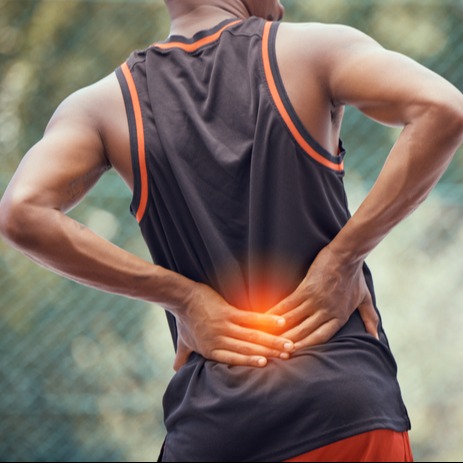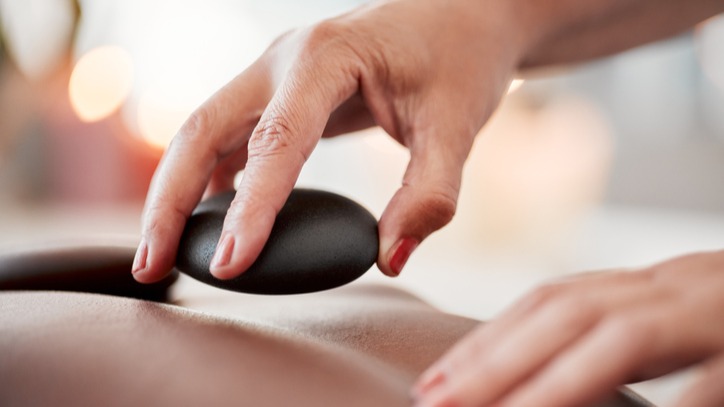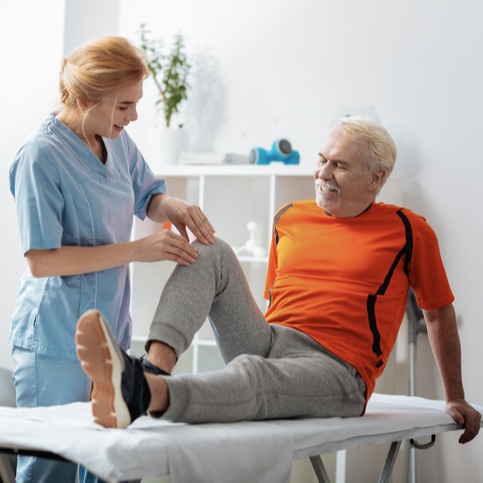
Pain management is an important aspect of healthcare, with many treatment options available to alleviate the suffering of individuals in pain. This article will provide an overview of available treatments, including medications, physical therapy, massage therapy, exercise and movement, acupuncture, medical devices, injections, support groups, and complementary and alternative medicine. We'll also discuss the benefits, risks, and potential effectiveness of each treatment option.
Key Takeaways
Medications and injections, including non-opioid drugs and opioids, can be used for pain management based on the severity of the pain and the patient's medical history.
Physical therapy and exercise effectively reduce pain, improve mobility, and contribute to long-term relief of abdominal pain and improved quality of life.
Massage therapy and acupuncture are holistic approaches to pain relief that can reduce inflammation, improve range of motion, relieve pain, and promote healing.
Dietary changes, stress management techniques, natural remedies, surgery, and other therapies can also be beneficial for pain management. An integrated approach combining various treatments can provide optimal pain relief.
Medications for Pain Management
Medications used in pain management may include non-opioid drugs, opioids, and other medications. Non-opioids, like non-steroidal anti-inflammatory drugs (NSAIDs) and acetaminophen, are commonly used to treat mild to moderate pain. Opioids, such as hydrocodone, oxycodone, and morphine are reserved for moderate to severe pain. Other medications, like muscle relaxants, anticonvulsants, and antidepressants, can be used in combination with non-opioid and opioid medications to assist in pain management. As with all medical interventions, providing the best possible care is of top priority for pain clinic, and medications may be one of the solutions for managing pain.
It is crucial to carefully consider the benefits and risks of each medication, as well as the patient's medical history, before recommending a medication for pain management.

Physical Therapy for Pain Management
Physical therapy is an important component of a comprehensive program for managing chronic pain. Physical therapy can help in both the short and long-term to reduce pain, restore mobility, and improve overall quality of life. Physical therapists are skilled healthcare professionals who assess pain and design individualized treatment plans to address the underlying causes of pain and improve a person's overall health. Therapies like exercise, manual therapy, and hydrotherapy can reduce inflammation, strengthen muscles, and improve joint mobility and range of motion. In addition, physical therapists can provide lifestyle changes and education to better manage pain, including relaxation techniques, breathing exercises, and posture training. With physical therapy, individuals can find long-term relief from chronic pain and improve their quality of life.
Massage Therapy for Pain Management
Massage therapy is a holistic approach to pain relief that can reduce inflammation, enhance range of motion, and promote relaxation. It is a safe and effective method for alleviating discomfort, facilitating healing, and restoring balance to the body. Compassionate massage therapists employ various techniques to assist individuals dealing with pain, such as deep tissue massage, acupressure, and trigger point therapy. These techniques stimulate circulation in the area, relieve tension, and enhance mobility. Massage therapy is also effective in reducing stress and anxiety and improving sleep quality. It proves beneficial for individuals with chronic conditions, aiding in pain and muscle tension reduction. With its wide-ranging benefits, massage therapy is an excellent addition to any pain management plan.
Exercise and Movement for Pain Management
Exercise and movement can effectively reduce pain, enhance range of motion, and promote healing. Physical activity increases blood flow and circulation, facilitating the delivery of oxygen and nutrients to tissues. It also boosts the body's production of endorphins, its natural painkillers. Regular exercise and movement can reduce inflammation, improve posture, and strengthen muscles and bones, all contributing to pain reduction. Additionally, exercise can reduce stress and improve sleep, further alleviating pain.
Acupuncture for Management of Pain
Acupuncture is a traditional Chinese medicine practice with a centuries-old history of aiding in pain reduction and enhancing overall health. It is founded on the concept of meridians, the body and central nervous system's energy pathways. The stimulation of these meridians through acupuncture is believed to restore balance and foster healing. Advocates of acupuncture for pain management argue that it can reduce inflammation, trigger the release of endorphins, and increase blood flow to the affected area. Studies have demonstrated the effectiveness of acupuncture in treating chronic pain stemming from conditions such as arthritis, fibromyalgia, and migraines. Acupuncture is generally safe for pain relief and carries minimal risks, but it is essential to seek treatment from a qualified practitioner who can determine the appropriate points to stimulate for an individual's condition and provide the most effective treatment.

Heat and Cold Therapy for Pain Management
Heat and cold therapy are two common methods of pain relief that can reduce inflammation from joint injuries and enhance overall comfort. These treatments can be used independently or in combination with other pain management techniques. Heat therapy relaxes muscles, while cold therapy reduces swelling and inflammation. Both heat and cold therapies can be easily applied at home using heating pads, ice packs, or a combination of both. When used correctly, these treatments are safe and effective for pain reduction and improved comfort.
Relaxation techniques can complement heat and cold therapies to reduce swelling and help alleviate pain. Methods such as meditation, deep breathing, and progressive muscle relaxation can reduce stress and tension, enhancing overall comfort and minimizing pain.
Relaxation Techniques for Pain Management
Relaxation techniques are a crucial component of pain management. Relaxation can help reduce tension and stress, which can exacerbate physical pain. These techniques can also diminish the perception of pain by reducing stress levels and allowing the body to focus on other sensations. They are typically included in comprehensive pain management programs and may encompass breathing exercises, guided imagery, progressive muscle relaxation, and visualizations.
Breathing exercises promote relaxation by emphasizing deep, slow breaths to reduce stress and anxiety. Guided imagery involves focusing on positive images to alleviate pain and anxiety. Progressive muscle relaxation reduces bodily tension through systematic muscle tensing and releasing. Visualizations require concentrating on a peaceful, calming image while controlling breathing to alleviate stress and pain. These relaxation techniques are integral for effective pain management and are typically incorporated into comprehensive pain management plans.
Cognitive Behavioral Therapy for Pain Management
Cognitive Behavioral Therapy (CBT) is an evidence-based approach to pain management that aims to modify patterns of thought and behavior to mitigate the impact of pain. This therapy focuses on teaching strategies to identify and alter negative thought patterns, replacing them with more constructive and positive thinking. Additionally, it emphasizes the significance of physical activity and the development of healthy coping skills, such as relaxation techniques. The objective is to assist individuals in adapting to and effectively managing various types of pain. CBT is a potent tool for helping individuals enhance their quality of life while dealing with pain. With the right guidance, it can be a successful approach to pain management. Furthermore, dietary changes can also be beneficial in the treatment of pain.
Dietary Changes for Pain Management
Dietary changes can be a powerful method for pain management. Consuming a balanced diet rich in fruits, vegetables, and whole grains provides the body with essential nutrients to reduce inflammation and promote healing. Avoiding processed foods, added sugars, and saturated fats can further help in reducing inflammation and increasing energy levels. Incorporating foods high in omega-3 fatty acids, like salmon, can also contribute to inflammation reduction and pain relief. Additionally, paying attention to how specific foods affect your body can help identify those that may worsen your pain levels. By making these dietary changes, you can take control of your pain and promote natural healing.

Stress Management Techniques for Pain Management
Stress is a significant factor in chronic pain, and effective management plays a crucial role in controlling pain levels. Stress can lead to muscle tension, exacerbating pain. Assisting patients in practicing relaxation techniques and stress management can contribute to pain reduction. Additionally, engaging in activities that evoke positive emotions, such as hobbies, can be beneficial for pain control.
Healthcare professionals should provide education and support to help patients recognize and manage stress. They can offer resources and strategies, and psychological therapies including cognitive-behavioral therapy and problem-solving techniques, to improve stress management. Furthermore, support groups can empower patients to develop coping skills and better handle stress.
Natural Remedies for Pain Management
Natural remedies are a vital aspect of chronic pain management, offering patients alternative options to traditional treatments. For many, these remedies can provide relief from discomfort and pain while avoiding the side effects of certain medications. Popular natural remedies include massage therapy, acupuncture, yoga, meditation, and physical therapy. Additionally, a combination of dietary and lifestyle changes can also alleviate pain. Consuming anti-inflammatory foods like fruits, vegetables, and whole grains, engaging in regular exercise, and ensuring proper rest can contribute to pain reduction. By incorporating these natural remedies, patients can take charge of their health and pain management.
It's important to note that natural remedies should complement traditional treatments. A holistic approach to pain management can lead to better outcomes. As such, natural remedies can be invaluable tools in managing chronic pain and improving quality of life. Along these lines, for individuals struggling with chronic pain, surgery may also be a viable option for pain management.
Surgery for Pain Management
Surgery can be a beneficial and effective solution for those facing chronic pain, providing an alternative to natural remedies and other traditional treatments. Surgery can be used to identify the source of the persistent pain and remove it, leading to long-term relief. While it is an invasive form of treatment, many patients experience significant improvements in their quality of life after surgery. Highly trained medical professionals use advanced techniques to ensure that the procedure is as safe and successful as possible. For those with severe chronic pain, surgery can be a viable option for relieving their discomfort.
As with any medical treatment, the risks and benefits of surgery should be weighed carefully before making a decision. The next section will discuss transcutaneous electrical nerve stimulation (TENS) for pain management, another potential option for those with chronic pain.
Transcutaneous Electrical Nerve Stimulation (TENS) for Pain Management
Transcutaneous Electrical Nerve Stimulation (TENS) is a drug-free, non-invasive procedure used to help manage pain. It operates by providing a low-level electrical current to the area of the body experiencing pain, blocking pain signals from reaching the brain. TENS is frequently employed to treat pain resulting from chronic musculoskeletal pain, injuries, joint pain, and nerve pain. It may also alleviate chronic pain associated with conditions such as fibromyalgia, arthritis, and sciatica. Advantages of TENS include its non-invasiveness, relative safety, and lack of side effects.
TENS should be used under the supervision of a medical professional to as pain medicines ensure safe and effective treatment. When used correctly, TENS can provide immediate and long-term pain relief. For those seeking a drug-free approach to pain management, TENS can be an ideal solution.
As we transition to the next section, biofeedback for pain management is an effective pain relief method that combines physical and psychological techniques to manage pain.
Biofeedback for Pain Management
Biofeedback is a form of pain relief that combines physical and psychological techniques to help reduce discomfort and improve overall well-being. It is a non-invasive treatment that uses technological tools, such as sensors and monitors, to measure and record physiological signals. The goal is to help people better understand their body and its reactions to pain. Through biofeedback, individuals can learn to control the body's response to pain, thereby reducing pain and other associated symptoms. It is an effective way to reduce stress, anxiety, and other issues that may be contributing to pain. With biofeedback, patients can gain an understanding of how to better manage their pain and have greater control over their overall health. This can lead to improved quality of life and improved physical and mental wellbeing. With the help of a trained professional, biofeedback can be a powerful tool to help people manage their pain. Transitioning to the next topic, hypnosis for pain management can also be beneficial for individuals seeking to manage their pain.
Hypnosis for Pain Management
Hypnosis is a mind-body technique that combines cognitive and relaxation strategies to reduce pain and improve overall well-being. It can be used in tandem with other treatments to help clients manage their pain. In hypnosis, the client enters a state of deep relaxation, and their unconscious mind is more open to suggestion. This allows the therapist to provide suggestions that can help the client manage their pain. Hypnosis can also help the client learn new coping strategies, such as deep breathing and visualization. Hypnosis can improve quality of life by reducing pain and anxiety, and allowing clients to better manage their pain. By utilizing the power of the mind, hypnosis can be an effective technique for helping clients manage their pain and improve their overall well-being.
Nerve Blocks for Pain Management
Nerve blocks are a medical procedure used to provide relief from chronic pain by blocking nerves from transmitting pain signals to the brain. This treatment option can be used for both short and long-term pain management. It may involve injections of anesthetics and anti-inflammatory medications, as well as the insertion of electrodes to deliver electrical stimulation. Nerve blocks can be applied to treat various conditions, including arthritis, sciatica, and migraines. The procedure typically takes place in an outpatient setting and is generally safe and effective. The primary goals of nerve block therapy are to alleviate neuropathic pain, provide targeted pain relief, reduce inflammation, and improve overall quality of life. Patients typically experience a reduction in pain symptoms and improved mobility following the procedure. Nerve block therapy is an excellent option for individuals seeking an effective, non-invasive form of pain management.

Medical Devices for Pain Management
Medical devices are a form of non-invasive and minimally invasive pain management that can provide targeted relief for various conditions. These devices can be used to address chronic and acute pain, as well as to manage the effects of injuries and disabilities. This approach to pain management allows for the precise delivery of medication and other treatments, which can significantly reduce the time required to achieve desired results with adequate pain relief. Additionally, medical devices offer a safe means to manage pain without the need for prolonged medication use or invasive procedures.
In addition to alleviating pain, medical devices can also enhance the quality of life for individuals living with chronic pain. By improving mobility, reducing inflammation, and providing targeted relief, these devices enable patients to lead more active and healthier lives. They can be used in conjunction with traditional therapies or to complement medications. With the right combination of treatments, individuals can find relief from severe pain and ultimately improve their lives.
Medical devices are invaluable tools for pain management and can be tailored to the individual needs of each patient. With the right combination of treatments, individuals can receive the targeted relief they need and enjoy a higher quality of life.
Injections for Pain Management
Injections are an effective, yet minimally invasive, form of pain relief for a range of conditions. These injections can be used to reduce inflammation, deliver medications to specific areas of the body, or provide relief from chronic pain. Trained healthcare professionals administer injections that can be tailored to the individual's needs to ensure the best possible outcome. While the injection itself may cause some discomfort, the effects of the pain relief are often felt almost immediately. In addition, injections can provide long-term relief, reducing the need for other forms of pain treatment afterward. Injections offer an attractive alternative to oral medications or surgery and can be an effective way to manage pain and improve the quality of life. As with any medical treatment, it is important to consult with a medical professional to determine the best course of action. With the right plan of care, injections can be a safe and effective way to manage pain. Moving forward, we will explore the use of support groups for pain management.
Support Groups for Pain Management
Joining a support group can provide a valuable outlet for individuals struggling with pain, helping them cope with the physical and emotional aspects of their condition. Pain management support groups offer an opportunity to connect with others who are similarly afflicted, enabling members to share their experiences and provide mutual understanding and support. Group members can also learn from their peers about strategies that work to manage pain and coping techniques. Pain management support groups can empower individuals to take control of their health and well-being by giving them the opportunity to share their experiences in a safe and supportive environment. This can lead to improved physical, psychological, and emotional health. Transitioning to the next section, complementary and alternative medicine for pain management can provide additional support and relief for the management of chronic pain.
Complementary and Alternative Medicine for Pain Management
Complementary and alternative medicine (CAM) offer a range of therapies for individuals suffering from chronic pain, providing additional tools to manage and reduce discomfort. Practices such as acupuncture, yoga, massage, aromatherapy, and meditation can complement existing pain management treatments. CAM allows for a holistic approach to pain management, focusing on the whole person rather than just the physical symptoms. Furthermore, it can be tailored to an individual's specific needs and preferences, providing greater autonomy in their treatment plan. CAM can also effectively reduce stress and anxiety while improving overall physical and mental well-being. By adopting an integrated approach to pain management, individuals can find relief and gain better control over their pain.
Frequently Asked Questions
What Are the Most Effective Methods of Pain Management?
In pain management, various methods can help reduce discomfort and enhance the quality of life. These methods include medication, physical therapy, massage, acupuncture, relaxation techniques, and heat therapy. Each method offers unique benefits that may make it the most suitable option for an individual. It's essential to discuss these options with a healthcare professional to determine the best fit for an individual's needs and lifestyle.
Are There Any Long-Term Side Effects Associated With Pain Management Treatments?
Pain management treatments can have long-term side effects, depending on the type of treatment being and over the counter medications being used. For example, the use of opioids for pain management can have potential side effects such as sedation, constipation, nausea, and physical dependence. Non-opioid medications may also have long-term side effects such as liver damage, kidney damage, or stomach ulcers. Additionally, long-term use of certain treatments, such as corticosteroids, can cause mood swings, weight gain, and other health problems. It is important to talk to your doctor about any potential long-term side effects before beginning a pain management treatment plan.
Are There Any Lifestyle Changes I Can Make to Help Manage My Pain?
Yes, there are many lifestyle changes you can make to help manage your pain. Exercise regularly, as it can help reduce stiffness and pain. Maintain a healthy diet, including plenty of fresh fruits and vegetables, as they are packed with nutrients that can help reduce inflammation. Consider relaxation techniques such as yoga, tai chi, or meditation. Additionally, getting plenty of rest and avoiding stress can be beneficial in managing your pain. Make sure to speak with your doctor if you have any concerns about how best to manage your pain.
What Is the Cost of Pain Management Treatments?
The cost of pain management treatments can vary widely, depending on the type of pain medicine treatment and the provider. Generally, over-the-counter treatments such as physical therapy, chiropractic care, acupuncture, and massage therapy are typically less expensive than more invasive treatments like epidural steroid injections and surgery. Medication costs can also significantly impact the overall expense of pain management treatments. It's important to discuss your treatment options and their associated costs with your healthcare provider to determine the best option for you.
What Are the Risks Associated With Taking Prescription Medications for Pain Management?
Prescription medications for pain management can have associated risks, such as increased tolerance, dependence, and addiction. Some medications for disease control may also cause side effects, including dizziness, drowsiness, and nausea. Long-term use of certain medications for pain control can also lead to organ damage, such as liver or kidney problems. It is important to talk to your doctor or healthcare provider about any risks associated with taking prescription medication for pain management. They can help you determine the best course of treatment for your individual needs.
Rely on PlanetDrugsDirect.com to Find your Prescription Drugs Online
As a trusted prescription referral service, we offer important benefits whenever you order online. Each of our partner pharmacies and/or government-approved dispensaries is committed to providing the best experience possible of any online prescription referral service on the internet. We offer:
Low prices
Quick turn-around times
Generic and brand-name medications
Unparalleled customer service
Sources
https://pubmed.ncbi.nlm.nih.gov/26896946/
https://pubmed.ncbi.nlm.nih.gov/33004170/
https://pubmed.ncbi.nlm.nih.gov/24547798/
https://pubmed.ncbi.nlm.nih.gov/29220782/
 Medically reviewed by
Medically reviewed by 





